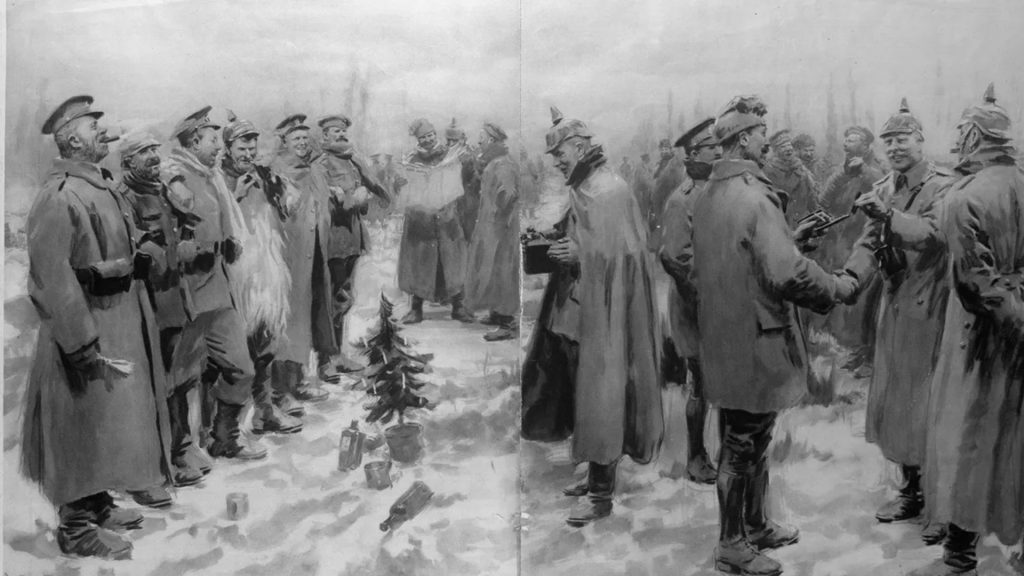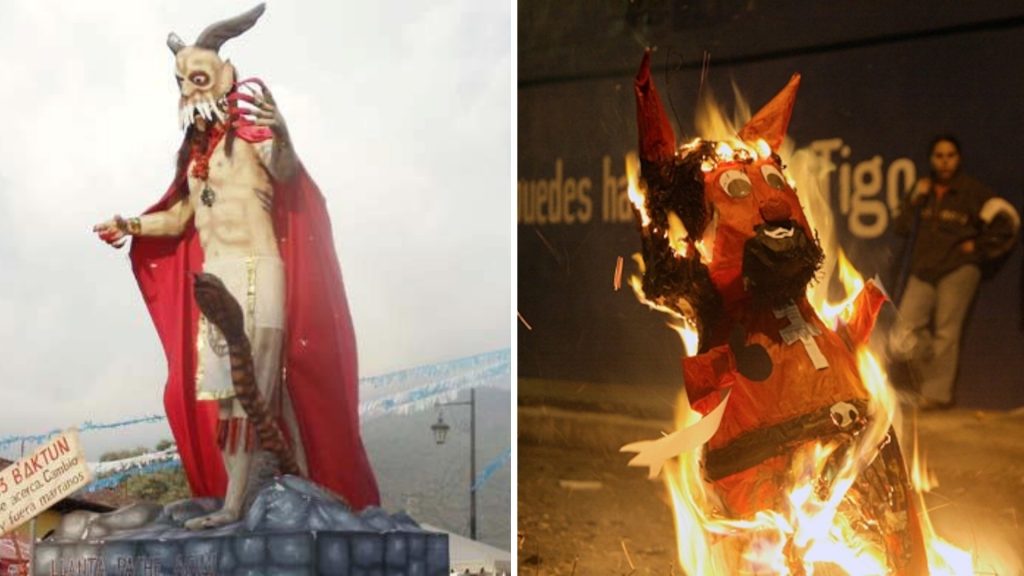The image of Christmas is one of peace and goodwill. But the full story behind some of its traditions and events is far more complex and, at times, deeply surprising. What we accept as festive normality often conceals a reality that is much more peculiar. Here are some of the most unexpected truths behind the tinsel and carols.
1. Why are there more heart attacks on Christmas?

A 33% spike in heart attack deaths occurs on Christmas Day itself. This is the most immediate and human shock. It directly contradicts the joyful image of Christmas with a life-or-death statistic, grabbing attention instantly. It’s personal and universally concerning.
This isn’t just a one-day event. Another major study in the Journal of the American Heart Association found that the week between Christmas and New Year’s sees a 15% overall increase in heart-related deaths compared to any other two-week period in the winter. This period is often referred to by cardiologists as the dead week.
2. The Immense Environmental Toll

Christmas generates enough non-recyclable wrapping paper to circle the globe and millions of tons of wasted food. After the personal health shock, this moves to a collective, global consequence of our celebrations. The sheer scale of waste (food, wrapping paper) is a surprising and guilt-inducing follow-up.
- It’s estimated that the carbon footprint of the gifts received by just 1 UK child at Christmas is equivalent to driving a car over 150 miles.
- A study by the recycling company Biffa found that the UK throws out 227,000 miles of wrapping paper, enough to circle the equator nine times. Crucially, over 40% of it cannot be recycled due to plastic-based coatings, glitter, and dyes. It’s estimated that Americans generate 4.6 million pounds of additional waste from wrapping paper and shopping bags during the holidays.
- The carbon footprint of a 6.5ft artificial tree is around 40 kg of CO2 equivalent. According to the Carbon Trust, you must reuse the same artificial tree for at least 10-12 years for its impact per year to be lower than buying a real tree annually.
- The UK wastes approximately 270,000 tons of food during the Christmas period. While, in the United States, the Department of Energy estimates that food waste increases by 25% during the holidays, translating to nearly 5 million extra tons of landfill waste.
3. The Christmas Creep Backfire

Stores that put up decorations too early can actually see lower sales due to festive fatigue. This fact explains a modern phenomenon everyone has experienced. It’s a why didn’t I realize that? moment that reveals how holiday marketing can psychologically backfire, linking the previous personal and environmental points to consumer culture.
- A YouGov poll revealed that a majority of Americans (59%) find it “annoying” to see Christmas items for sale before Thanksgiving.
- A report by HubSpot found that 69% of consumers are already fatigued by repetitive ads and emails before Black Friday even arrives, indicating that the “always-on” holiday marketing strategy is overwhelming its intended audience.
- The study highlighted that early Christmas themes can cause a conflict for consumers who are still in a “Back-to-School” or “Halloween” mindset. This cognitive dissonance causes them to actively avoid the brand or store that is causing the discomfort.
4. The Cabbage Patch Kids Riots

In the 1980s, holiday shopping mania for a specific doll led to violent, police-called riots in stores. This escalates the consumerism theme to its most extreme and dramatic example, actual violence. It provides a shocking, real-world anecdote that proves the point about holiday mania.
- In 1983, Coleco, the manufacturer, sold an astonishing 3 million dolls in a matter of months, but demand vastly outstripped supply.
- The dolls became a black-market commodity, with some selling for hundreds of dollars above their retail price (which was around $25).
- Many of them got hospitalized, and some were treated at the scene for cuts and bruises.
5. Holiday Disorientation for Dementia

The chaos of Christmas can severely increase anxiety and confusion for elderly individuals with cognitive decline. This is another deeply personal and often overlooked human cost. It serves as a poignant contrast to the violent consumerism of the previous point, showing a different, quieter kind of suffering during the holidays.
- For the nearly 7 million Americans living with Alzheimer’s or other dementias, the Christmas season is not a time of joy but a period of heightened risk, marked by a clinical phenomenon known as ‘sundowning’ that can be amplified to a week-long scale.
- A survey by the UK’s Alzheimer’s Society found that 60% of people with dementia and their carers find the Christmas period more challenging than the rest of the year.
6. The $30,000 Christmas Dinner

A restaurant offered the world’s most expensive Christmas meal, highlighting extreme holiday wealth disparity. This fact bookends the consumerism theme with an example of extreme, almost absurd, wealth. It highlights the vast economic disparity that exists during a season focused on giving and family.
- According to the U.S. Department of Agriculture, the cost of a classic Christmas dinner for 10 people in the United States in 2023 was approximately $70-$90.
- The cost of this single meal for one person could have funded over 300 traditional family Christmas dinners.
- When compared to charitable giving, the price of the meal is 600 times the average individual donation to a charity during the holiday season.
7. The WWI Christmas Tree Propaganda

In 1915, British intelligence spread a false story that Germans used Christmas trees to lure and kill soldiers. This shifts the focus to a powerful, dark historical anecdote. It’s a longer narrative that reveals how the symbolism of Christmas was weaponized, adding a layer of historical depth and intrigue.
- In December 1915, major British newspapers, including The Times and The Daily Mirror, began carrying shocking first-hand accounts from the front.
- Soldiers reported that the Germans had placed illuminated Tannenbäume (Christmas trees) on the parapets of their trenches. This was framed as a sinister lure, a false gesture of peace to coax unsuspecting British soldiers out of their trenches to celebrate, only to be mercilessly machine-gunned.
- One widely circulated account described a “massacre” of Scottish soldiers who had been tempted by the trees and the sound of “Silent Night.”
- The propaganda was largely successful. While small, localized fraternization occurred in 1915, nothing on the scale of the 1914 truce happened again.
8. Deadly Christmas Traditions

Practices like Guatemala’s Christmas Bomb (a gunpowder-filled box) were real, dangerous, and now banned traditions. This continues the historical theme with a bizarre and dangerous example, showing that the modern safe Christmas is a relatively new concept.
- The most extreme versions were wooden or cardboard boxes, sometimes shaped like bulls (toritos), filled with a dangerous mix of gunpowder, sawdust, magnesium, and sometimes scrap metal or glass to increase the spectacle.
- They were carried through crowds in chaotic processions. The goal was to create the most impressive and terrifying display possible.
- A 2010 report from Guatemala’s National Civil Police recorded numerous injuries and at least one death directly linked to these homemade bombs during the festive season.
- Due to the escalating casualties, the Guatemalan government implemented a national ban on the manufacture and use of these unregulated, homemade bombs in the 2010s.
9. Bonus Trivia:

The choice between a real and artificial tree is more complex than it seems, with a clear environmental breakeven point that most consumers are unaware of.
- A detailed life cycle assessment by the UK’s Carbon Trust found that a 6.5-foot artificial tree has a carbon footprint equivalent of roughly 40 kg of CO2. This is due to its manufacturing (often in factories powered by fossil fuels) and international shipping from primary production centers in China. Therefore, you must reuse an artificial tree for 10+ years for it to be eco-friendly.
- A real tree of the same size, grown locally, has a much smaller footprint of around 3.5 kg of CO2, but only if it is composted or chipped after use. If it ends up in a landfill, its decomposition produces methane, pushing its footprint to over 16 kg of CO2. The original ‘Christmas tree’ in many homes was actually a Christmas Cactus.
- The most sustainable option is a potted living tree that can be reused for years or replanted. Otherwise, a responsibly sourced real tree that is recycled is better than a frequently replaced artificial one.
The Other Side of the Christmas Season
The magic of Christmas is real, but so is its shadow. It ends the list on a note of surprising and shocking facts. These facts aren’t meant to ruin the spirit, but to reveal the complex, untold story of the holidays. Understanding this darker side allows us to celebrate more mindfully, focusing not just on the joy of the season, but on the well-being of ourselves, our communities, and our planet.








